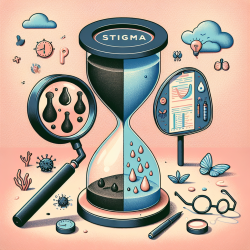Understanding Stigma and Health: A Time-Based Approach
Stigma is a pervasive social process that affects individuals' health by limiting access to resources and acting as a stressor. Despite its dynamic nature, stigma is often treated as a static concept in research and interventions. The article "Integrating Time into Stigma and Health Research" by Earnshaw et al. (2022) argues for the inclusion of time as a crucial factor in understanding and addressing stigma-related health inequities.
The Importance of Time in Stigma Research
Earnshaw et al. identify three critical timescales that influence stigma: historical context, human development, and status course. By examining these timescales, researchers can gain insights into when stigma is most harmful and when interventions can be most effective.
- Historical Context: Stigma is influenced by the historical period in which individuals live. For example, societal attitudes towards certain stigmatized groups, such as the LGBTQ+ community, have evolved significantly over the past decades. Understanding these shifts can help identify periods when stigma is most pervasive and harmful.
- Human Development: Different life stages present varying vulnerabilities to stigma. Children and adolescents, for instance, may be more susceptible to the negative effects of stigma due to their developing coping mechanisms and social identities.
- Status Course: The nature of stigmatized statuses can change over time. For example, individuals may acquire or lose stigmatized identities, such as weight status or recovery from substance use disorders, affecting their experiences of stigma.
Implications for Practitioners
For practitioners, integrating a time-based perspective into their work can enhance the effectiveness of interventions. By understanding when individuals are most vulnerable to stigma, practitioners can tailor interventions to be more timely and impactful. Here are some practical steps:
- Identify Sensitive Periods: Recognize life stages where individuals are most vulnerable to stigma, such as adolescence, and focus interventions during these times.
- Monitor Historical Changes: Stay informed about societal changes that may influence stigma and adjust interventions accordingly.
- Support Status Transitions: Provide targeted support for individuals undergoing changes in their stigmatized status, such as those entering recovery from substance use disorders.
Encouraging Further Research
While the article by Earnshaw et al. provides a comprehensive framework for integrating time into stigma research, there is still much to explore. Researchers are encouraged to investigate how different timescales interact and influence stigma and health outcomes. Longitudinal studies and innovative methodologies can offer deeper insights into these complex dynamics.
To read the original research paper, please follow this link: Integrating time into stigma and health research.










